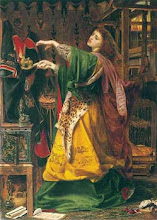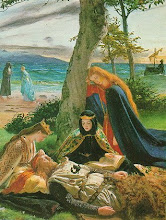 Think of Wales and you think of the red dragon, the heraldic symbol of the Principality that features on our national flag.
Think of Wales and you think of the red dragon, the heraldic symbol of the Principality that features on our national flag.This mythical creature has come to symbolise the fiery Welsh, proud and defiant in the face of adversity - usually in battles with the English.
Legend has it that the symbol of the red dragon was sported on a crest by Arthur, son of Uthr Bendragon. It was said that the father had seen a dragon in the sky predicting his son would be king.
Other, more likely explanations of how the dragon came to be associated with Wales, can be more readily verified.
The dragon symbol probably found its way into Wales via Rome, when the Roman legions arrived on our shores sporting the mythical, fire-breathing creature as an emblem.
In the Medieval era Welsh poets would compare their brave leaders to dragons and between 1485 and 1603 the dragon formed part of the arms of the Tudor dynasty.
It surfaced again in the 19th century when it appeared as the royal badge for Wales in 1807. From then onwards the red dragon was frequently used as a symbol in Welsh patriotic societies and was finally officially recognised by the Queen in 1959.
Other national emblems include the daffodil and the leek.
The leek has the older association with Wales with references to this green and white plant dating back to the six-century poet Taliesin.
The leek is also mentioned in 13th century Red Book of Hergest which contains manuscripts of the Welsh mythological tales known as The Mabinogian.
Eating leeks was believed to encourage good health and happiness and they were worn by the Welsh in the Battle of Crecy in 1346.
It has been suggested, too, that the green and white family colours of the Tudor dynasty are taken from this most Welsh of symbols.
By the time Henry VIII - whose father Henry VII founded the Tudor dynasty - presented a leek to his daughter on St David's Day in 1536, the leek was firmly associated with Wales.
St David is, of course, the patron saint of Wales and the patriotic wear small, ornamental leeks and daffodils on March 1 to celebrate the Principality's own saint's day.

In contrast, the daffodil is a much younger emblem, gaining popularity in the 19th century. Women, especially, were fond of this bright, cheerful flower as an emblem of Wales.
At the beginning of the 20th century it became even more closely associated with the Principality when Welshman and British Prime Minster David Lloyd George wore it on St David's Day and at ceremonies to mark the investiture of the then Prince of Wales.


































1 comments:
Arrived for the daffodil identification and left, better informed, with pleasant impressions of our isle's past. -Pacific Coast: The States.
Post a Comment